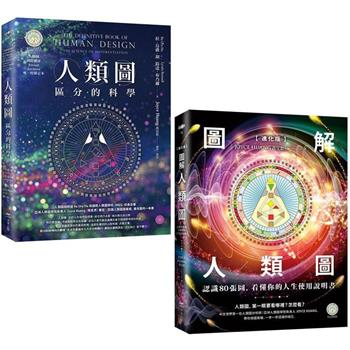| FindBook |
|
有 1 項符合
Elizabeth House Press, Ipswich, UK.的圖書 |
 |
$ 0 電子書 | How to Work an Exhibition Stand
作者:P J Alexander 出版社:Elizabeth House Press, Ipswich, UK. 出版日期:2012-10-11 語言:英文  看圖書介紹 看圖書介紹
|
|
|
圖書介紹 - 資料來源:樂天KOBO 評分:
圖書名稱:How to Work an Exhibition Stand
The Smartest Route to New Customers!
Whatever your product, service or industry, whatever the size of your company, if you are not participating in exhibitions (also called trade fairs or trade shows), you may be missing out on one of the smartest, most overlooked and yet most rapidly developing routes to new customers and markets.
How to Work an Exhibition Stand teaches you how to organize your participation at an exhibition, including how to manage your exhibition stand (exhibition booth), how to train your staff in-house, how to set clear marketing goals, and how to design a coherent marketing, promotion and follow-up strategy.
Your Secret Weapon in a Crowded Marketplace
In today's crowded marketplace with its multiple and expensive marketing channels, many companies are turning to exhibitions to get their products and services in front of targeted buyers; people who want to talk to them; people who will travel to see, hear, touch, taste and experience their products or services.
How to Work an Exhibition Stand reveals insider secrets on how to get the most from your appearance at any exhibition.
Train Your Staff to Act like Professionals
As well as fees for outsourced exhibitor training, when you add travel and accommodation costs, this can be a sizeable expenditure. How to Work an Exhibition Stand shows you how to prepare your staff in-house for an exhibition.
Here's just some of the critical information you will discover inside:
- 15 reasons why visitors come to exhibitions.
- 26 good reasons to exhibit.
- Select the right exhibition; UK or overseas.
- Select your exhibition manager.
- Select your exhibition team.
- Select the right team for a given show.
- People you don't want on your team - 3 basic types.
- Exhibition team skills and competencies.
- Attract visitors to your stand.
- The 2 essential truths every exhibitor must know.
- Why visitors don't care about you, your products or your company.
- How to speak with visitors - on and off your stand.
- 3 small words that help you sell.
- How to make the first move.
- The bitter truth of why people buy.
- Four words you must never say to a visitor.
- Qualify a visitor in 30 seconds.
- 22 examples of stand behaviour to avoid.
- Deal with visitors who are of no interest to you.
- Why you should never assume you know why someone is buying.
- 4 key steps to help a prospect arrive at a buying decision.
- Key questions to 'break the ice' with visitors to your stand.
- Deal with objections, misunderstandings, dislike, suspicion, indifference.
- Deal with rejection; the secret of understanding and handling rejection.
- The difference between personal and concept rejection.
- Three little words to make you laugh at rejection.
- The story of the Buddha and the apple; it could change your world-view!
- 'In-house' games that overcome rejection.
- Understand that rejection is not failure.
- Using Social Media for promotion.
- Uncover visitors' real issues.
- Use the 'party' technique to get visitors to trust and like you.
- 7 techniques to extract maximum information from visitors.
- 34 questions to focus the conversation with visitors.
- Use 'flimsies' to say 'no' politely.
- Deal with salesmen and students.
- Deal with unidentified visitors.
- 10 tips on how one person can deal with several visitors at a time.
- Deal with troublesome visitors.
- 33 tips for individual exhibitors, includes: dress, grooming, attitude.
- Understand the mind of the visitor.
- Identify visitors' real issues.
- Use reverse-focus, open questions to keep you in control.
- Why people never buy something for what it is.
- Appeal to visitors' emotional buying instincts.
- Why people are not interested in saving time.
- Why saving money is not a major issue.
- Why price is not always the main consideration.
- Close the conversation: summarize; propose a plan of action; get agreement.
- Take the initiative and get an appointment.
- Examples of closing statements.
- Use reduced eye contact to end a conversation.
- Why last impressions are important.
Whatever your product, service or industry, whatever the size of your company, if you are not participating in exhibitions (also called trade fairs or trade shows), you may be missing out on one of the smartest, most overlooked and yet most rapidly developing routes to new customers and markets.
How to Work an Exhibition Stand teaches you how to organize your participation at an exhibition, including how to manage your exhibition stand (exhibition booth), how to train your staff in-house, how to set clear marketing goals, and how to design a coherent marketing, promotion and follow-up strategy.
Your Secret Weapon in a Crowded Marketplace
In today's crowded marketplace with its multiple and expensive marketing channels, many companies are turning to exhibitions to get their products and services in front of targeted buyers; people who want to talk to them; people who will travel to see, hear, touch, taste and experience their products or services.
How to Work an Exhibition Stand reveals insider secrets on how to get the most from your appearance at any exhibition.
Train Your Staff to Act like Professionals
As well as fees for outsourced exhibitor training, when you add travel and accommodation costs, this can be a sizeable expenditure. How to Work an Exhibition Stand shows you how to prepare your staff in-house for an exhibition.
Here's just some of the critical information you will discover inside:
- 15 reasons why visitors come to exhibitions.
- 26 good reasons to exhibit.
- Select the right exhibition; UK or overseas.
- Select your exhibition manager.
- Select your exhibition team.
- Select the right team for a given show.
- People you don't want on your team - 3 basic types.
- Exhibition team skills and competencies.
- Attract visitors to your stand.
- The 2 essential truths every exhibitor must know.
- Why visitors don't care about you, your products or your company.
- How to speak with visitors - on and off your stand.
- 3 small words that help you sell.
- How to make the first move.
- The bitter truth of why people buy.
- Four words you must never say to a visitor.
- Qualify a visitor in 30 seconds.
- 22 examples of stand behaviour to avoid.
- Deal with visitors who are of no interest to you.
- Why you should never assume you know why someone is buying.
- 4 key steps to help a prospect arrive at a buying decision.
- Key questions to 'break the ice' with visitors to your stand.
- Deal with objections, misunderstandings, dislike, suspicion, indifference.
- Deal with rejection; the secret of understanding and handling rejection.
- The difference between personal and concept rejection.
- Three little words to make you laugh at rejection.
- The story of the Buddha and the apple; it could change your world-view!
- 'In-house' games that overcome rejection.
- Understand that rejection is not failure.
- Using Social Media for promotion.
- Uncover visitors' real issues.
- Use the 'party' technique to get visitors to trust and like you.
- 7 techniques to extract maximum information from visitors.
- 34 questions to focus the conversation with visitors.
- Use 'flimsies' to say 'no' politely.
- Deal with salesmen and students.
- Deal with unidentified visitors.
- 10 tips on how one person can deal with several visitors at a time.
- Deal with troublesome visitors.
- 33 tips for individual exhibitors, includes: dress, grooming, attitude.
- Understand the mind of the visitor.
- Identify visitors' real issues.
- Use reverse-focus, open questions to keep you in control.
- Why people never buy something for what it is.
- Appeal to visitors' emotional buying instincts.
- Why people are not interested in saving time.
- Why saving money is not a major issue.
- Why price is not always the main consideration.
- Close the conversation: summarize; propose a plan of action; get agreement.
- Take the initiative and get an appointment.
- Examples of closing statements.
- Use reduced eye contact to end a conversation.
- Why last impressions are important.
|











